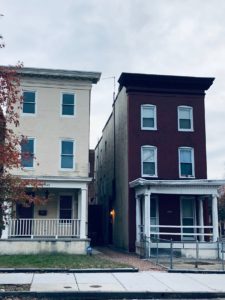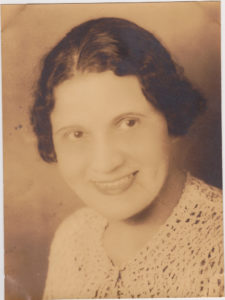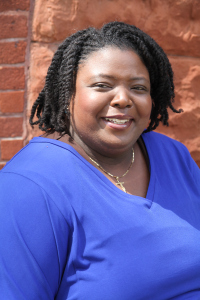Eleven highway markers are being erected to highlight Maryland women, events, and landmarks involved in the suffrage movement. Jean Thompson is a volunteer writer with the Maryland Women’s Heritage Center: she works on the project documenting local suffragists. Thompson writes about the highway markers and highlights Black women suffragists in Baltimore who organized their own suffrage campaign due to racism within the suffrage movement led by white women.
Thanks to detective work by a network of local historians, librarians, and volunteers, Maryland suffragists will be remembered when the nation commemorates the centennial of the passage of the 19th Amendment.
Eleven highway markers are being erected to highlight Maryland women, events, and landmarks in the struggle to gain the right to vote. The markers expand Maryland’s footprint on the National Votes for Women Trail, a state-by-state effort organized by the National Collaborative for Women’s History Sites to recognize suffragists and their grassroots activism.

Baltimore’s first marker in the series honors Augusta T. Chissell and Margaret Gregory Hawkins, African-American leaders in women’s suffrage, civic improvement, and civil rights organizations. This Saturday, November 23, the marker will be unveiled at 1532 and 1534 Druid Hill Avenue, the former homes of Augusta Chissell and Margaret Gregory Hawkins.
With their West Baltimore neighbor Estelle Young, the women promoted voting rights through clubs they ran, including the Progressive Women’s Suffrage Club and the DuBois Circle. More than 100 years ago, the side-by-side homes of Chissell and Hawkins buzzed with political and social activism.
Baltimore was segregated and African-Americans were largely excluded from the predominantly white suffrage movement. Despite the movement’s “votes for all” rhetoric, many among the white leaders were willing to deny women of color the vote to curry support from Southern Democrats, who did not want African-American voter rolls to grow. Jim Crow laws were undermining suffrage won by African-American men with the passage of the 15th Amendment in 1870. Recognizing that the vote was a tool of empowerment in the fight against discrimination and for better living conditions, the African-American women organized their own suffrage campaign.
Who Were They?

- Augusta T. Chissell (pictured right) was the secretary of the Progressive Women’s Suffrage Club, a devoted civic leader, and a member of the DuBois Circle. A networker, she used her connections on projects promoting social justice and the health and well-being of women and children. Following the passage of the 19th Amendment, she wrote A Primer for Women Voters, a recurring column in the Baltimore Afro-American, “for the benefit of women who wish to inform themselves in regard to their newly acquired duties and privileges as voters and citizens.”
- In 1915, Estelle Hall Young founded the Progressive (or Colored) Women’s Suffrage Club, one of the earliest documented African-American suffrage clubs in the United States. She delivered speeches advocating equal rights for women at gatherings of African-American club women. During a 1916 meeting of the Women’s Co-operative Civic League with a reported attendance of 250 club representatives, Young presented on women’s suffrage, according to a news report in the Baltimore Afro-American. “The league went on record as supporting women’s suffrage,” the article continued. When the size of the Progressive Women’s Suffrage Club outgrew the leaders’ living rooms, meetings were held at the Colored Y.W.C.A. on Druid Hill Avenue. After the ratification of the 19th Amendment in 1920, the Club then held voter education classes at the Y to inform new voters of how to access and effectively use their new right. The Young family’s home in the neighborhood no longer stands.
- Margaret Gregory Hawkins grew up in a family of distinguished African-American educators, whose activism spanned several generations. She was a founding member and first president of the DuBois Circle, which began as an auxiliary to the Baltimore branch of the Niagara Movement civil rights organization. The Circle’s members engaged in community and social improvement projects, welcomed prominent speakers to inform members about political issues, and devoted meetings to discussions about the significance of women’s suffrage. Hawkins, who became Vice President of the Progressive (or Colored) Women’s Suffrage Club, also opened her home for their meetings and for other civic organizations as well.
Restoring the faded tracks of trailblazers
There is a sense of urgency to the task of locating evidence of the work of Chissell, Hawkins, Young — and dozens of other Maryland suffragists. Whether these women were rural or urban, well-to-do or union wage-earners, mainstream or marginalized, gaps in their history are challenging. Diaries, letters, event programs, and other personal papers are elusive. Minutes of suffrage meetings, copies of speeches, and images of some participants have not been found.

“As we hurtle into the 21st Century, the 20th Century is becoming ‘ancient’ history,” said Ida Jones, Ph.D., university archivist at Morgan State University. Jones helped document the West Baltimore women’s roles in the suffrage movement. “In many cases, the buildings and the primary records that would be tangible evidence of Baltimore’s role in the local and national story of women’s suffrage may no longer exist,” she said. “If the records of the organizations were not preserved, or if there are no descendants to whom were passed documents, the voices of the activists are silenced when they pass on.”
Her concern was echoed by Kacy Rohn, whose 2017 research for the Maryland Historical Trust confirmed the Druid Hill Avenue site and others. She combed the writing of Maryland women’s historians Diane Weaver, Ph.D., and Jean Baker, Ph.D., plus census records, newspaper reports, city directories, and library resources. Rohn crisscrossed the state seeking potential landmarks. The dearth of prior documentation, she said, was stunning.
“What that told me was we as a society had completely forgotten about the local suffragists and their organizations,” Rohn said. “It really shocked me the extent to which it had been forgotten and not talked about. I think we, as a society, have undervalued the contributions of women.”
Lessons from the struggle
In conjunction with the state’s 19th Amendment centennial celebration, six highway markers have been installed by the Maryland Historical Trust and Maryland Department of Transportation. Five additional markers have been sponsored by the Maryland Women’s Heritage Center (MWHC) and funded by the William G. Pomeroy Foundation. MWHC will place a marker at Goucher College in February 2020. Additional sites are being researched.
“Many people do not know that Baltimore was a major center of suffrage activism, host to national suffrage meetings and leaders, and the home of several suffrage clubs that sent representatives to the ends of the state, to the state legislature in Annapolis, and to Washington to organize support for the 19th Amendment,“ said Diana M. Bailey, Executive Director of MWHC. “With the Pomeroy Foundation’s support, we are preserving these stories of Marylanders and the lessons and legacy they left for us as voters today.”
The value of the companion research yielding previously untold stories cannot be measured. For future generations, the suffragists’ stories are being preserved in local and national databases. The goal is a richer understanding of the political, social, racial, and economic struggle to achieve equal voting rights.
“Although some of us take our right to vote for granted, our history shows us that that right has not always been universal, and for many today it is still not easily available and is currently under major assault in several states,” said Pamela Young, Ph.D., a volunteer with the MWHC. “The history of universal suffrage in the U.S. has been a long-standing fight for equality that is not truly guaranteed to all. Thus, for those who may not know this history, we must continue the work of those foremothers on whose shoulders we stand, to ensure that this basic right be maintained and truly available to all. It seems that a “permanent” marker commemorating the work of two African-American suffragists is a fitting way to not only raise them up out of forgotten history but also to remind us that we should continue this work in their memory.”
Maryland Markers on the National Votes for Women Trail:
- Westminster, Carroll County: Just Government League*
- Still Pond, Kent County: Maryland’s First Women Voters*
- Lexington Park, St. Mary’s County: Margaret Brent Pilgrimage*
- Hyattsville, Prince George’s County: Suffrage Motorcade*
- Overlea, Baltimore County: Women’s Suffrage*
- Garrett County: The Garrett County Pilgrimage*
- Baltimore: Augusta T. Chissell and Margaret Gregory Hawkins homes**
- Baltimore County: Goucher College (Dedication February 28, 2020) **
- To be determined**
- To be determined**
- To be determined**
*Maryland State Highway Department, Maryland Historical Trust, Maryland’s Commission on the Commemoration of the 100th Anniversary of the Passage of the 19th Amendment to the U.S. Constitution. **Maryland Women’s Heritage Center, William G. Pomeroy Foundation
IF YOU GO
Maryland Women’s Heritage Center welcomes the public to attend the dedication program for the Baltimore marker at 11 a.m. on Saturday, Nov. 23, 2019, at Union Baptist Church, 1219 Druid Hill Avenue, Baltimore, MD 21217. Participants will travel from the church to 1532 and 1534 Druid Hill Avenue for the unveiling of the marker. RSVP here.
Disclaimer: The views and opinions expressed on our blog do not necessarily reflect the views or position of Maryland Humanities or our funders.

